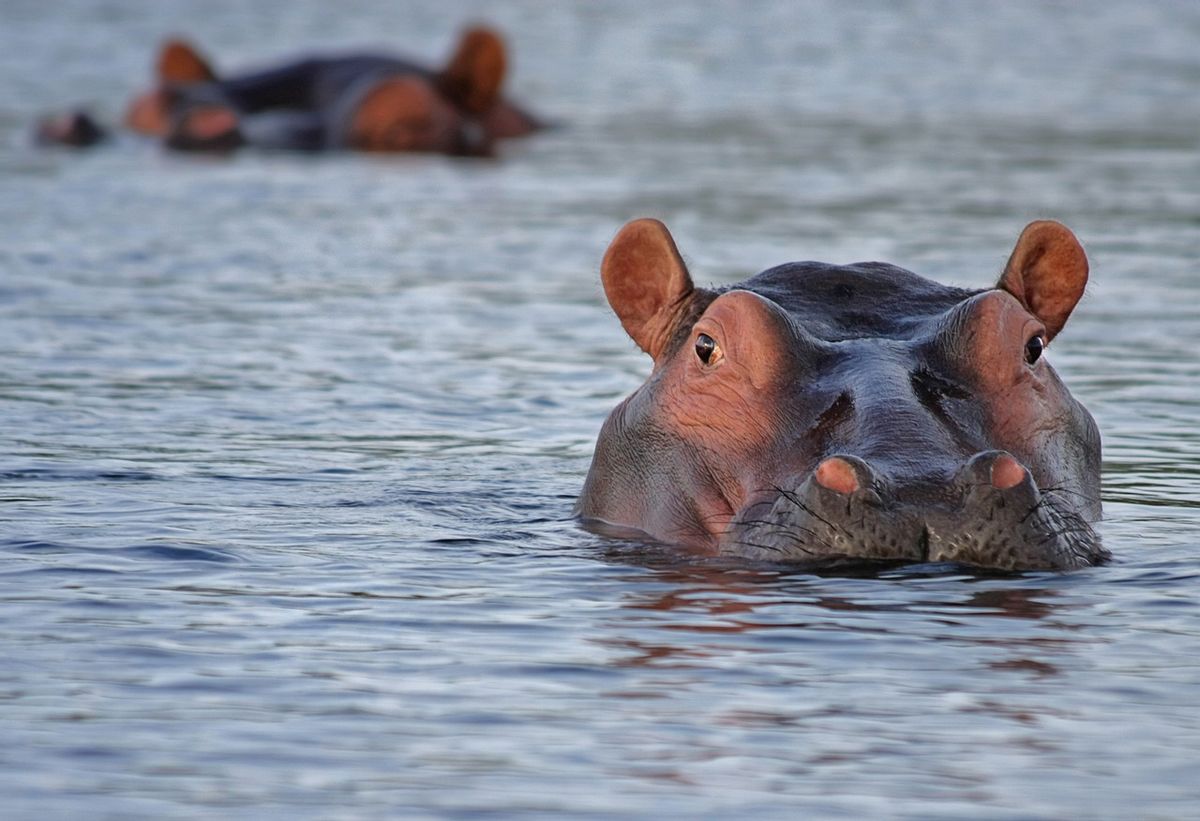The word "hippopotamus" was derived from the Greek language, in which "hippos" means horse and "potamos" refers to a "river or rushing water." These so-called "river horses" spend the majority of their lives in slow-moving bodies of water. However, despite that fact, they can neither swim nor float.
This fact about hippos' lack of swimming skills has amazed internet users for years. For instance, at least two popular posts on X (formerly Twitter) — one in June 2022 and another in August 2023 — made the claim with a video supposedly showing the creature propelling itself "using intermittent ground contact, like astronauts on a moonwalk."
Hippos can't technically swim, and their high density prevents them from floating. Consequently,
they propel themselves using intermittent ground contact, like astronauts on a moon walk
pic.twitter.com/XZPA25VSfc— Science girl (@gunsnrosesgirl3) August 10, 2023
Sharing a different video of young hippos in the water, another post read: "Fun fact: hippos can't swim - not even these chonky babies. They're too heavy to float, so they literally bounce or walk underwater."
Fun fact: hippos can't swim - not even these chonky babies. They're too heavy to float, so they literally bounce or walk underwater. pic.twitter.com/DWuiraDlAL
— Today Years Old (@todayyearsoldig) November 17, 2022
But why is a mammal that spends most of its life in water unable to swim? According to zoologists, hippos are simply too dense to make it happen. The San Diego Zoo Wildlife Alliance stated:
Their bodies are far too dense to float, so they move around by pushing off from the bottom of the river or simply walking along the riverbed in a slow-motion gallop, lightly touching the bottom with their toes, which are slightly webbed, like aquatic ballet dancers.
Perhaps this comes as no surprise considering the fact that the semi-aquatic mammal can weigh up to 8,000 pounds.
This bob-like movement can be seen in the below-displayed video posted to X by the Cincinnati Zoo and Botanical Gardens on Aug. 17, 2021. The clip shows resident calf Fiona pushing off her mother's body, as well as the tank's floor, to breach the water's surface.
Fiona demonstrates her graceful water ballet moves with her mom Bibi! Hippos can't actually float or swim. They push off the bottom and propel themselves to the surface for air. Adult hippos can hold their breath for up to 5 minutes. #TeamFiona pic.twitter.com/WUv67pOw05
— Cincinnati Zoo (@CincinnatiZoo) August 17, 2021
The planet's two species of hippos — the river (or common) hippo and smaller pygmy hippo — are both found only in Africa. Hippos are the third-largest living land mammal after elephants and white rhinos.
Although hippos are indeed unable to swim, they have evolved as a species to develop unique adaptations that allow them to thrive in water environments. For example, their eyes, ears, and nostrils are on the tops of their heads, allowing them to breathe, see, and hear while their body is underwater.

